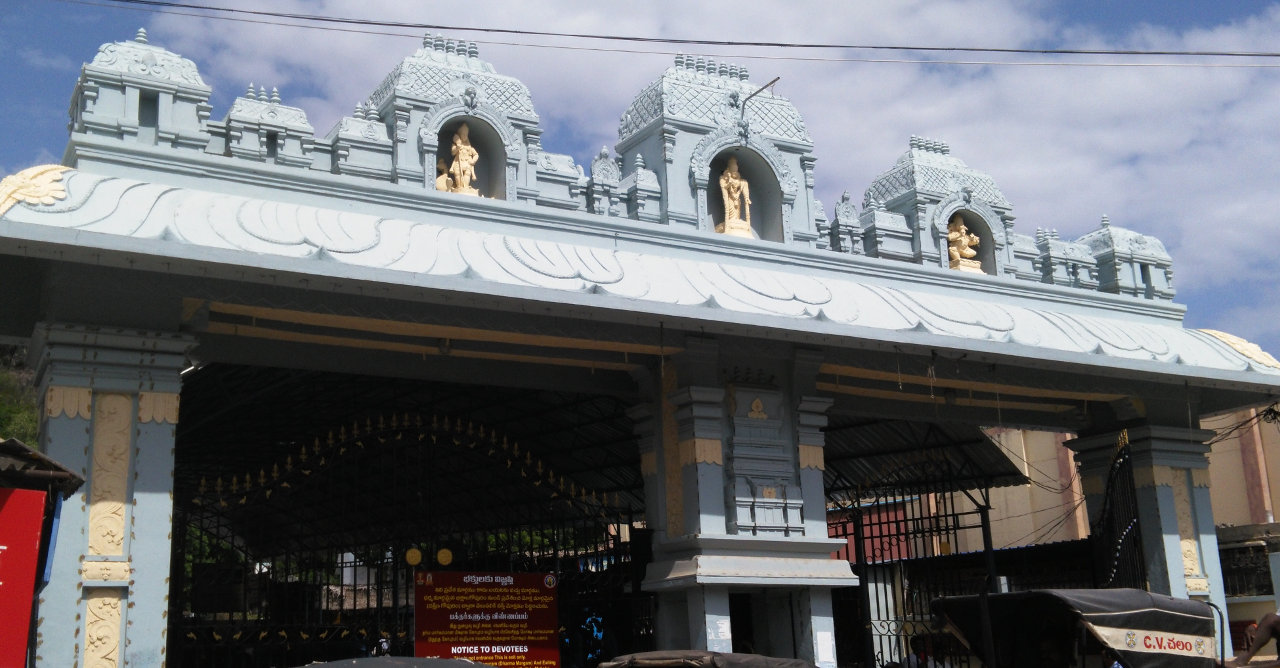Visited on: August 15, 2016
Location
Srikalahasthi is 45 kms from Tirupathi, 100 kms from Chittoor and 120 kms from Chennai. It is well connected by road from all places in Andhra Pradesh. There is a Railway Station in Srikalahasthi. The nearest airport is Tirupathi, which is 20 kms away.
General Information
| Moolavar | Sri Kalahastheeswarar / Sri Kudumithevar / Sri Jyothi Vidankar / Sri Thenkayilainathar |
| Ambal | Sri Gnanappungothai / Sri Vandarkuzhalal / Sri Gnana Prasunamba |
| Theertham (Holy water) | River Ponmukali / Brahma Theertham |
| Sthala Vriksham (Sacred Tree) | Vilvam |
| Pathigam (Hymn) rendered by | Saint Thirugnanasambanthar (2 Pathigam) Saint Thirunavukarasar (1 Pathigam) Saint Sundaramurthy (1 Pathigam) |
- This is one of the 276 Devara Paadal Petra Sthalams and 19th in Thondai Nadu.
- Srikalahasthi is one of the “Pancha Pootha Sthalams” and Lord Shiva here is considered to be Vayu Lingam (Air).
- Lord Shiva graces this temple as a Swayambhu Moorthy (self-manifested), and is said to be white in colour. This lingam is not touched by human hands, not even by the priests, as it is “Theendathirumeni”.
- This is also the Gnana Shakti Pedam - one of the 51 Shakti Pedams in India.
- This temple is considered as “Dakshin Kailash” - Mount Kailash of South India.
- This is a very big temple and is situated between two steep hills, Sripuram and Mummudi-cholapuram.
- This temple is also popular as a Rahu-Kedu Parikara Sthalam.
- There are two flag posts (Kodimaram) here - one is covered by metal and the other one is 60 feet tall and is made of a single stone.
History of the Temple
This temple was originally constructed by Pallava kings in 5th Century CE. It is believed that it was reconstructed in 12th Century CE by Chola and Vijayanagara Kings. Unlike many other Shiva temples in India this temple has a large number of impressive structures.
This temple was carved out of a huge stone hill on the banks of river Ponmukali. There is a 100-pillar hall (mandapam) that is believed to have been constructed by the Vijayanagara King, Krishnadevaraya in the year 1516. This hill is also called as “Kailash Hill”.
